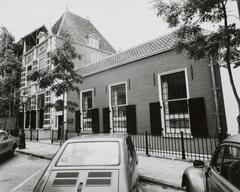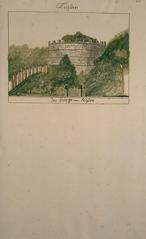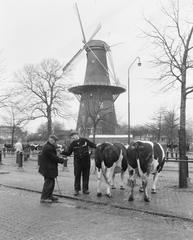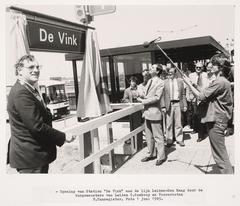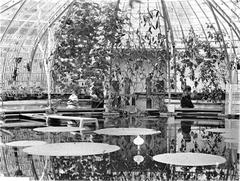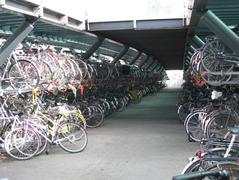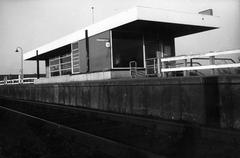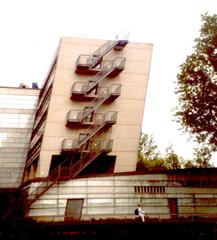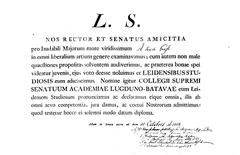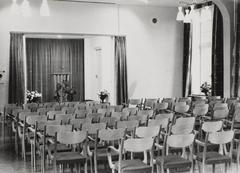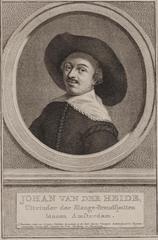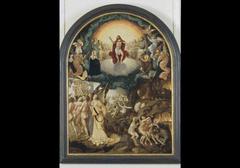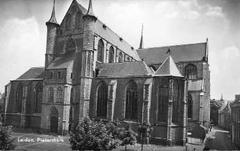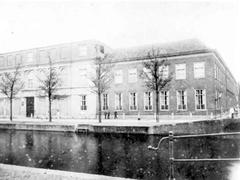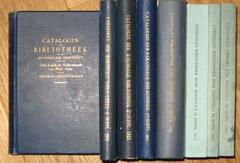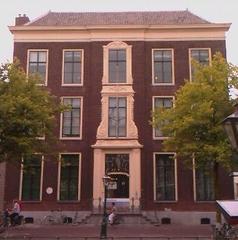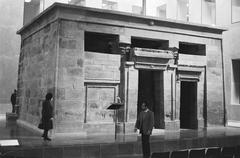
Nonnenbrug Leiden Visiting Hours, Tickets, and Historical Sites Guide
Date: 04/07/2025
Introduction
Nestled in the historic heart of Leiden, the Nonnenbrug (“Nuns’ Bridge”) is a captivating symbol of the city’s rich cultural heritage and architectural legacy. Spanning the picturesque Rapenburg canal, this iconic stone bridge connects historic streets adjacent to Leiden University’s renowned Academiegebouw. First documented in the early 15th century and closely associated with the former Dominican convent established by the Witte Nonnen in the mid-1400s, Nonnenbrug embodies centuries of Leiden’s urban evolution—from a medieval religious hub to a vibrant academic city (Leiden Wikipedia; Travellifebalance).
Architecturally, Nonnenbrug showcases traditional Dutch bridge construction with gently curved brick and stone arches, wrought-iron railings, and a design harmonizing with the surrounding 17th- and 18th-century canal houses. Its enduring presence reflects Leiden’s dedication to preserving historical integrity while accommodating modern needs, underscored by its designation as a national monument in 1968 (Wanderlog; holland.com).
Nonnenbrug is open 24/7 to pedestrians and cyclists, offering scenic views of Leiden’s canal system and immediate access to key landmarks such as Pieterskerk and the Burcht van Leiden. This guide delivers a comprehensive overview of Nonnenbrug’s history, architecture, cultural significance, and practical visitor information, equipping travelers to experience one of Leiden’s most treasured sites (Dutchwannabe; Leiden Tourist Office).
Table of Contents
- Introduction
- Historical Background
- Architectural Evolution
- Cultural and Urban Significance
- Visitor Information
- Enhancing Your Visit
- Frequently Asked Questions (FAQ)
- Conclusion and Final Tips
- References
Historical Background
Origins and Early History
The Nonnenbrug’s name—“Nuns’ Bridge”—reflects its historic proximity to convents that were pivotal to Leiden’s medieval development (Leiden Wikipedia). The bridge first appears in records in the early 15th century, serving as a critical connector between city quarters during Leiden’s expansion, especially as the textile industry flourished (Travellifebalance).
The initial structure was likely wooden, typical of early Dutch bridges. As Leiden thrived during the Dutch Golden Age, the bridge was rebuilt in brick and stone to reflect the city’s prosperity and growing importance (Leiden Wikipedia).
Evolution and Restoration
The Nonnenbrug has undergone several reconstructions over the centuries:
- 1609/1610 & 1669: Renewed and rebuilt to accommodate heavier traffic and to enhance durability.
- 1911: Renovation of the eastern arch.
- 1978: Complete reconstruction into the current three-arched, masonry-clad concrete bridge on traditional wooden piles.
- 1968: Designated as a national monument (rijksmonument), cementing its status as a protected heritage site (Rijksmonumenten).
Architectural Evolution
Medieval and Early Modern Development
Nonnenbrug exemplifies classic Dutch bridge engineering. The arches, constructed from locally sourced brick and natural stone, are designed to withstand the Netherlands’ wet climate and frequent canal flooding (holland.com; architecturecourses.org). Wrought-iron railings and understated stonework lend the bridge its characteristically Dutch aesthetic—functional, durable, and elegant.
Modern Restorations
Restoration efforts in the 19th and 20th centuries prioritized historical authenticity while improving safety and accessibility. The current structure, with three distinct arches and natural stone facings, harmonizes with the surrounding historic canal houses and complements Leiden’s urban landscape (Wanderlog).
Cultural and Urban Significance
Nonnenbrug’s location near former convents and the Academiegebouw underscores its enduring role in Leiden’s spiritual, academic, and civic life. It has served as a vital link for ceremonial university processions, daily commutes for students and locals, and as a scenic vantage point for artists and photographers. The bridge is central to Leiden’s identity as a walkable, bike-friendly city, embodying the Dutch principle of integrating water management and urban design (solosophie.com).
Visitor Information
Visiting Hours and Accessibility
- Hours: Open 24 hours a day, year-round.
- Admission: Free; no tickets or permits required.
- Accessibility: The bridge has level sidewalks (1.35 meters wide) for pedestrians and cyclists. Wheelchair users and those with strollers can cross with care, though the surrounding historic streets may feature uneven cobblestones.
Tickets and Tours
- Entry: No tickets needed to access Nonnenbrug.
- Guided Tours: Walking and canal tours featuring the bridge can be booked through the Leiden Tourist Office or platforms like GetYourGuide.
Best Times to Visit
- Lighting: Early morning and late afternoon provide optimal light for photography and a quieter experience.
- Season: Spring and early autumn offer pleasant weather and vibrant scenery.
Directions and Transportation
- Address: Nonnenbrug, Rapenburg, 2311 Leiden, Netherlands.
- Access: A 10–15 minute walk or short bike ride from Leiden Centraal Station. Public transport and nearby parking garages (Garenmarkt, Haagweg) are available, but cycling or walking is recommended in Leiden’s historic core (Lonely Planet).
Special Events
Nonnenbrug is featured in city walking tours, university ceremonies, and annual festivals. Check local tourism websites for event schedules and details (Leiden Tourist Office).
Enhancing Your Visit
Photography and Visual Experience
The bridge’s three masonry arches, wrought-iron railings, and decorative stonework—including Leiden’s coat of arms—make it a photogenic site. Capture views of the Rapenburg canal, lined with stately university buildings and classic Dutch architecture. Early and late hours offer the softest natural light (Rijksmonumenten).
 Alt text: Nonnenbrug stone arch bridge over a canal in Leiden with historic buildings in the background.
Alt text: Nonnenbrug stone arch bridge over a canal in Leiden with historic buildings in the background.
Nearby Attractions
- Rapenburg Canal: Stroll along this historic canal, widely regarded as one of the most beautiful in the Netherlands.
- Leiden University Academiegebouw: The ceremonial heart of the university, adjacent to the bridge.
- Pieterskerk: Grand medieval church and key site for academic events (Tourist Places Guide).
- Hofjes: Explore hidden courtyards that reflect Dutch social housing traditions (architecturecourses.org).
- Hortus Botanicus: One of the world’s oldest botanical gardens (Duinrell).
- Museums and Markets: The National Museum of Antiquities and the Leiden street market are within walking distance (Nova on the Road).
Frequently Asked Questions (FAQ)
Q: What are the Nonnenbrug visiting hours?
A: The bridge is accessible 24/7 throughout the year.
Q: Is there an entrance fee or ticket required?
A: No, Nonnenbrug is free to visit.
Q: Is the bridge wheelchair accessible?
A: Yes, though surrounding cobblestone streets may require extra care.
Q: Are guided tours available?
A: Yes, bookable via the Leiden tourist office or online platforms like GetYourGuide.
Q: What is the best time to visit for photography?
A: Early mornings and late afternoons provide the best light and fewer crowds.
Q: Can I cycle across Nonnenbrug?
A: Yes, but be considerate of pedestrians and follow local cycling etiquette.
Conclusion and Final Tips
Nonnenbrug is far more than a functional crossing; it is a living monument to Leiden’s layered history, architectural ingenuity, and vibrant urban culture. From its medieval origins to its current status as a protected national monument, the bridge invites visitors to step into the city’s rich past and enjoy its picturesque present. With free, 24-hour access and proximity to major attractions, Nonnenbrug is an essential stop for anyone exploring Leiden. Enhance your experience by joining a guided tour, photographing the scenic canal views, and respecting the historic environment.
For a richer visit, download the Audiala app for audio guides and the latest event information, and follow Leiden’s official tourism channels for updates. Embrace the charm and history of Nonnenbrug—a gateway to Leiden’s illustrious past and dynamic present.
References and Further Information
- Leiden Wikipedia, 2025, Wikimedia Foundation (https://en.wikipedia.org/wiki/Leiden)
- Hidden Gems of Leiden: An Ultimate Travel Guide to This Enchanting City in the Netherlands, 2025, Travellifebalance (https://travellifebalance.com/hidden-gems-of-leiden-an-ultimate-travel-guide-to-this-enchanting-city-in-the-netherlands/)
- Best Bridges in Leiden, 2025, Wanderlog (https://wanderlog.com/list/geoCategory/866433/best-bridges-in-leiden)
- Dutch Architecture: From Heritage to Modern Masters, 2025, Holland.com (https://www.holland.com/global/tourism/get-inspired/current/dutch-architecture/dutch-architecture-from-heritage-to-modern-masters)
- Nonnenbrug Rijksmonument Listing, 2025, Rijksmonumenten (https://rijksmonumenten.nl/monument/25677/nonnenbrug-gemetselde-brug-van-drie-bogen-met-zandstenen-blokken-en-versieringen-gesmeed-anker-met-stadswapen/leiden/)
- Things to Do in Leiden This Weekend, 2025, Dutchwannabe (https://dutchwannabe.com/things-to-do-in-leiden-weekend/)
- Visit Leiden Official Tourist Information, 2025, VisitLeiden.nl (https://www.visitleiden.nl/en)
- Visit Leiden Guide, 2025, SoloSophie (https://www.solosophie.com/visit-leiden-guide/)
- Guided Tours in Leiden, 2025, GetYourGuide (https://www.getyourguide.com/leiden-l1275/)
- Audiala Travel App, 2025 (https://audiala.com)



